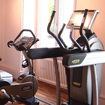Grammar:Should-Shouldn't - Have to Health Advices
Elementary level
Description
Materials
Main Aims
-
Students will be able to use the modal verb "should/shouldn't" and "have to"
Subsidiary Aims
-
Learners will be able to give advice through using productive (oral) skills
Procedure (46-58 minutes)
Teacher talks about the change of the season. I am very tired in these days. ı get ill easily. What's your suggestion to me? "Summer is about to end. The weather can be rainy in these days. One day the weather is cold, the other day it is warm. So people get ill. We have a busy work life or if you are a student you have a lot of things to do at school.You feel tired. How do you overcome this busy life? What is your suggestion to your friends to feel fit?" Discuss for two minutes in pairs. 1-2 student tell their partners' opinion.
Teacher shows the person used to contextualise the subject. Selin who got a cold receives some advice from her friends and relatives etc. to get better. Learners read the advice sentences with "should" for two minutes and discuss it in pairs. Ask students: "What is the main aim of the people around Selin?". Gist of the sentences: They tell their personal opinions, they tell what is good/necessary to do. Then students turn the page and read the rest of the story. Selin sees the doctor and he breaks the news. Students discuss the text and the difference of the effect the modals created in the meanings. Ask: "If she refuses to take medicine, what would happen?" Gist of the doctor's message: Doctor states a fact and it's her obligation to take medication.
I will try to clarify the meaning, form and pronunciation of the language usages through self-guided discovery method. For the first part I ask CCQs to clarify the meaning of the modals "should" and "have to" so learners will see the 'importance levels' of utterances. Learners will discuss the concept checking questions in pairs. For the form clarification sentence structure will be examined to emphasize its form. Finally I will get students do pronunciation drill, however ı don't think they will have many problems with this part.
For controlled practice learners will first do a matching question that they combine two compatible sentences. In the second practice they will write an advice for given problems with one positive and one negative statement. A list of advice and problems will be given to them. After giving the answers ,in pairs they will role-model and take turns. They will cover the advice and one of them will tell the problem, the other learner will give advice with a positive or negative statement. Last, they will have a gap-fill exercise. In this exercise they will decide for both of grammatical structures structures; the modal verb and the infinitive verb to complete a dialogue. They will check answers in pairs.
Students listen to a dialogue between a doctor and a patient talking about the patient's health condition. I will make the students listen to a part of the dialogue. The scenario is that patient has been getting ill all the time and he can't recover totally. He goes to the doctor to ask her advise(Facetoface Elementary Student's Book, 10.1). After listening, students will work in pairs. They assume that they are doctors and they give their advice to the patient as a doctor. So they will complete the missing part of the dialogue. In the second exercise, they will do role-play. One of them will be the doctor and the other will be the patient. They will take turns and do the conversation in their own words.
1.Learners will play a board game. Each player tosses a coin and moves around the board giving each other health advice for each problem. Heads = 2 spaces, tails = 1 space. If players do not give advice they have to go one step backwards! 2.Students give advice for another scenario: One of their friends is working too hard, and he doesn't sleep and eat properly. He is under high stress and he got depressed. Learners have to give some (funny) advices to cheer up this imaginary friend.

